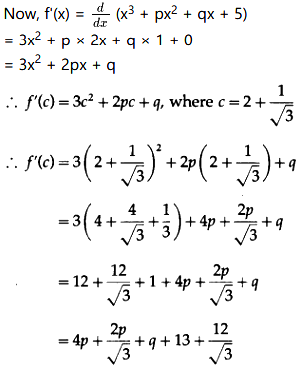The Rolle’s theorem holds for the function f(x)

Also, there exists at least one point c ∈ (1, 3) such that f'(c) = 0.

But f'(c) = 0

Multiplying equation (1) by √3, we get
4√3p + √3q= -13√3
Subtracting this equation from (2), we get
2p = -12 ⇒ p= -6
∴ from (1), 4(-6) + q = -13 ⇒ q = 11
Hence, p = -6 and q = 11.